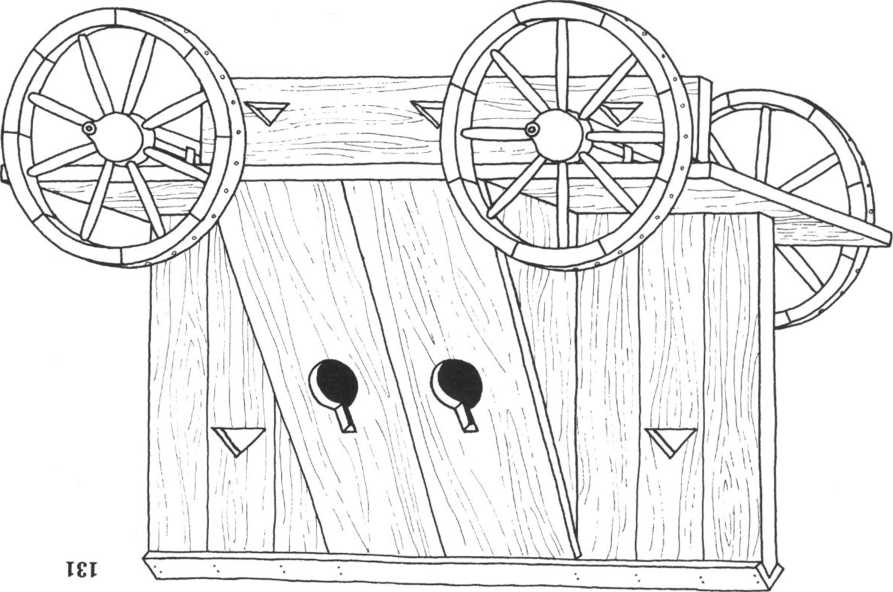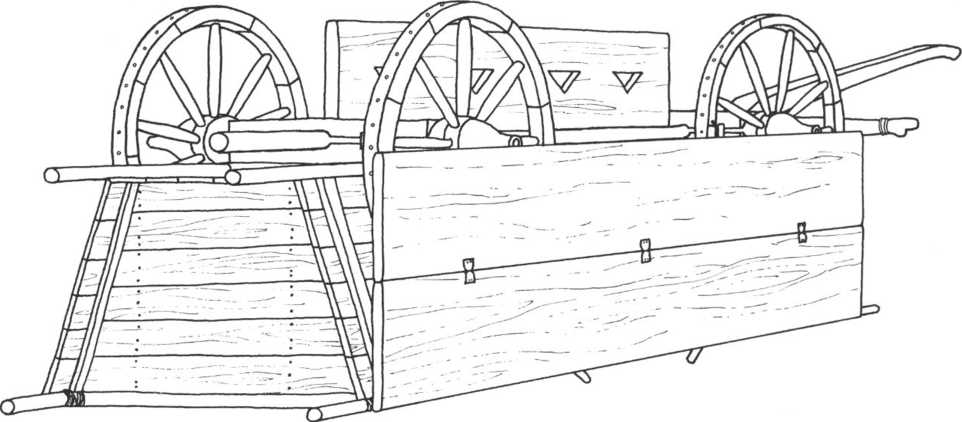Taken from the ‘Das Mittelalteriche Hausbuch’, this shows a development of the Hussite war-wagon that


Oei
Was in use by the second half of the 15th century. It differs principally in being a wheeled pavise rather than a true wagon. The box-like structure in the middle, repeated on the other side too, comprised a pair of sliding doors behind which a gun could be mounted when the wagon was stationary. On the march such wagons were placed on the outside of the column, protecting the infantry and baggage train in the centre (cavalry formed the vanguard and rearguard). Similarly, in camp and battle they were drawn up end to end to form a stockade, with the army’s tents set up inside and the baggage wagons forming a secondary defensive circle in the ‘place’, or centre of the camp (hence supply wagons being referred to as ‘place wagons’). Clearly these wheeled pavises were substantial constructions since the illustrations show that 4 horses were needed to draw them.
The Poles, who had been using wagons in battle long before the Hussites, took the technique of defending marching columns another stage further by adding thick mantlets to a frame projecting out alongside the wagon’s horses in order to protect them against missile fire, while the Russians carried additional wooden mantlets pierced with loopholes that could be thrown up at short notice to provide protection for their infantry.




 World History
World History









